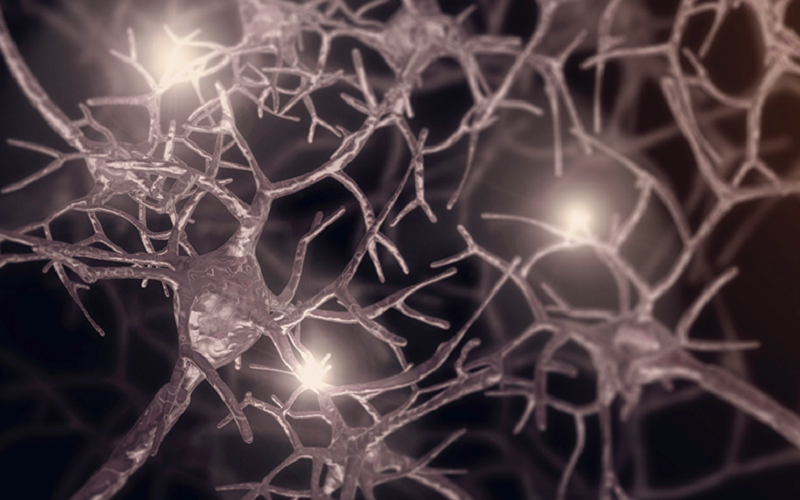
In the ever-evolving landscape of neuroscience, synaptic pruning has emerged as a critical process for maintaining optimal cognitive health. By streamlining neural connections, synaptic pruning shapes our brain’s architecture and ensures it functions efficiently throughout our lives. Here we delve into the intricacies of this fascinating biological process and highlights its importance in preserving cognitive function. Understanding the role of synaptic pruning in cognitive health is vital for anyone looking to maintain their mental sharpness and promote long-term brain wellbeing.
Contents
What Is Synaptic Pruning?
Synaptic pruning is a crucial neurobiological process that refines and optimizes the brain’s neural connections, allowing it to function more efficiently. This process involves the removal of weaker or redundant synapses (junctions where neurons communicate) while preserving and strengthening the more important and frequently used connections. Synaptic pruning plays a significant role in shaping the brain’s architecture, which in turn impacts cognitive function and overall brain health.
During early childhood and adolescence, our brains undergo rapid development, creating a vast number of synaptic connections. However, not all these connections are equally important or necessary for healthy cognitive function. Synaptic pruning acts as a selective mechanism that eliminates less essential connections while reinforcing the more significant ones. This fine-tuning process is critical for brain development, learning, and memory formation.
Synaptic pruning predominantly occurs in the early stages of life but continues, albeit at a slower pace, throughout adulthood. This ongoing process helps maintain cognitive function and adaptability, ensuring that our brains remain sharp and efficient as we age.

The Process of Synaptic Pruning
By understanding how synaptic pruning shapes our brain’s neural connections, we can appreciate its significance in maintaining cognitive health throughout our lives.
Stages of Synaptic Pruning
During early childhood and adolescence, the brain experiences rapid growth and development. During this time, the brain creates an abundance of synapses, leading to a dense network of neural connections. This overproduction of synapses is followed by a period of intense synaptic pruning, where weaker or less essential connections are eliminated. This process helps shape the brain’s neural circuitry, enabling efficient information processing, learning, and memory formation [1].
Synaptic pruning continues throughout adulthood, albeit at a slower pace compared to childhood and adolescence. This ongoing process helps maintain cognitive function by preserving the efficiency of the neural network. As we age, the rate of synaptic pruning may decline, potentially contributing to age-related cognitive decline. Understanding and supporting the pruning process during adulthood can be vital for preserving cognitive health as we grow older.
Factors Influencing Synaptic Pruning
Genetic factors play a significant role in determining the rate and extent of synaptic pruning. Variations in genes related to neural development and synaptic function can influence how the pruning process unfolds [2]. Understanding the role of genetics in synaptic pruning can help uncover individual differences in cognitive function and susceptibility to cognitive decline.
Various environmental factors can also influence synaptic pruning. Exposure to stress, toxins, or malnutrition during critical periods of development may negatively impact the pruning process, potentially leading to long-term consequences for cognitive health. Conversely, positive environmental factors, such as a stimulating and nurturing environment, can support healthy synaptic pruning and cognitive development.
Benefits of Efficient Synaptic Pruning
Efficient synaptic pruning helps streamline neural connections, enabling faster and more accurate information processing. This optimized neural network supports better learning, memory formation, and overall cognitive function [3]. Maintaining an efficient pruning process throughout life can help preserve mental sharpness and adaptability.
As we age, the brain undergoes various structural and functional changes, some of which can contribute to cognitive decline. Supporting healthy synaptic pruning throughout adulthood can help counteract these changes, potentially delaying or preventing age-related cognitive decline. By understanding the factors that influence synaptic pruning, we can develop strategies to support brain maintenance and promote cognitive health across the lifespan.

Nutritional Supplements That Benefit Synaptic Pruning
Synaptic pruning is a natural process that occurs during brain development, where the brain eliminates weaker or less necessary synaptic connections to make the neural network more efficient. This process occurs predominantly during childhood and adolescence but continues throughout life.
Although there is limited research on specific nutritional supplements that directly benefit synaptic pruning, certain nutrients are believed to support overall brain health and cognitive function in general, and synaptic pruning in particular.
Phosphatidylserine
Phosphatidylserine, a phospholipid found in cell membranes, might benefit synaptic pruning in several ways. Although there is limited research on the direct effects of phosphatidylserine on synaptic pruning, it has been shown to support overall brain health and cognitive function, which could indirectly influence the pruning process [4].
- Neuronal communication: As a component of cell membranes, phosphatidylserine plays an essential role in maintaining the integrity and fluidity of these membranes, which is crucial for efficient neuronal communication. Improved neuronal communication can facilitate the pruning process by helping the brain identify and eliminate weaker or less necessary synaptic connections.
- Neurotransmitter synthesis: Phosphatidylserine is involved in the synthesis of key neurotransmitters, such as acetylcholine and dopamine. These neurotransmitters are essential for various cognitive functions, including learning and memory. By supporting neurotransmitter synthesis, phosphatidylserine might indirectly promote synaptic pruning by enhancing the overall efficiency of the neural network.
- Neuroprotection: Phosphatidylserine has been shown to possess neuroprotective properties, which might help maintain healthy neurons and support the elimination of damaged or dysfunctional cells. This could contribute to a more efficient pruning process and promote overall brain health.
Choline
Choline is an essential nutrient that plays a critical role in brain health and cognitive function, and it might benefit synaptic pruning in several ways. Although direct research on choline’s effects on synaptic pruning is limited, its involvement in various brain processes suggests that it could indirectly influence the pruning process [5].
- Acetylcholine synthesis: Choline is a precursor to the neurotransmitter acetylcholine, which is vital for cognitive functions such as memory, learning, and attention. By supporting the synthesis of acetylcholine, choline helps maintain efficient neuronal communication, which could facilitate the pruning process by enabling the brain to identify and eliminate weaker or less necessary synaptic connections.
- Cell membrane integrity: Choline is a component of phosphatidylcholine, a major phospholipid in cell membranes. It contributes to the structural integrity and fluidity of neuronal cell membranes, allowing for efficient signal transmission between neurons. This enhanced neuronal communication might indirectly support synaptic pruning by ensuring that the neural network functions effectively.
- Neuroprotection: Choline has been shown to possess neuroprotective properties, potentially reducing the risk of neurodegenerative diseases and supporting the maintenance of healthy neurons. This neuroprotection could contribute to a more efficient pruning process and promote overall brain health.
Omega-3 Fatty Acids
Omega-3 fatty acids, particularly docosahexaenoic acid (DHA) and eicosapentaenoic acid (EPA), play an essential role in brain health and cognitive function. Although research on the direct effects of omega-3 fatty acids on synaptic pruning is limited, their involvement in various brain processes suggests they might indirectly benefit synaptic pruning in several ways [6]:
- Neuronal communication: DHA is a major structural component of neuronal cell membranes, playing a vital role in maintaining the integrity and fluidity of these membranes. This fluidity is crucial for efficient neuronal communication, which in turn can facilitate the pruning process by helping the brain identify and eliminate weaker or less necessary synaptic connections.
- Neuroplasticity: Omega-3 fatty acids, specifically DHA, have been shown to support neuroplasticity by promoting the growth and branching of neurons and the formation of new synapses. Enhanced neuroplasticity could support synaptic pruning by fostering the development of a more efficient and adaptable neural network.
- Neuroprotection and inflammation regulation: Omega-3 fatty acids, particularly EPA, have anti-inflammatory and neuroprotective properties. By reducing inflammation and protecting neurons from damage, omega-3 fatty acids may help maintain a healthy neural environment that supports the pruning process.
- Cognitive function: Research has shown that omega-3 fatty acids can improve cognitive functions, such as memory, learning, and attention. By supporting overall cognitive function, omega-3 fatty acids may indirectly promote synaptic pruning by enhancing the efficiency of the neural network.
Curcumin
Curcumin, the active compound found in turmeric, is known for its antioxidant, anti-inflammatory, and neuroprotective properties. Curcumin’s various impacts on brain health suggest that it might indirectly benefit the pruning process in several ways:
- Anti-inflammatory properties: Inflammation in the brain can negatively impact cognitive function and may hinder the synaptic pruning process. Curcumin’s potent anti-inflammatory properties can help reduce inflammation in the brain, potentially creating a healthier environment for synaptic pruning to occur.
- Antioxidant properties: Curcumin’s strong antioxidant effects help neutralize harmful free radicals, which can cause oxidative stress and damage neurons. By protecting neurons from oxidative stress, curcumin may contribute to maintaining a healthy neural network that supports efficient synaptic pruning.
- Neuroprotection and neurogenesis: Curcumin has been shown to possess neuroprotective properties, protecting neurons from damage, and promoting their survival. Additionally, some studies suggest that curcumin may promote neurogenesis, the growth of new neurons [7]. These effects could contribute to a more efficient and adaptable neural network that supports the pruning process.
- Synaptic plasticity: Some studies indicate that curcumin can enhance synaptic plasticity, the ability of synapses to strengthen or weaken over time in response to changes in activity [8]. Improved synaptic plasticity could facilitate synaptic pruning by enabling the brain to more effectively adapt and reorganize its neural connections.
Lifestyle Factors Affecting Synaptic Pruning
By examining the roles of sleep, exercise, and mental stimulation, we will uncover practical ways to support the pruning process and promote long-term brain wellbeing.
Sleep
Sleep plays a vital role in maintaining brain health and supporting synaptic pruning [9]. During sleep, the brain consolidates memories, clears waste products, and repairs damaged cells. Quality sleep also provides the brain with the opportunity to refine and reorganize neural connections, promoting efficient synaptic pruning. Research has shown that chronic sleep deprivation can negatively impact cognitive function and may even accelerate age-related cognitive decline.
To support brain health and synaptic pruning, it’s essential to prioritize good sleep hygiene. Some tips for improving sleep quality include:
- Establishing a consistent sleep schedule
- Creating a relaxing bedtime routine
- Limiting exposure to screens and blue light before bed
- Keeping the bedroom cool, dark, and quiet
- Avoiding caffeine and heavy meals close to bedtime
- Engaging in regular physical activity during the day
Exercise
Regular physical exercise is known to promote overall brain health and cognitive function. Exercise has been shown to increase blood flow to the brain, support the growth of new neurons, and enhance synaptic plasticity. These effects can indirectly support the synaptic pruning process by maintaining a healthy and efficient neural network [10].
To reap the cognitive benefits of physical activity, experts recommend engaging in a combination of aerobic exercises (e.g., brisk walking, running, swimming), strength training, and balance exercises. Aim for at least 150 minutes of moderate-intensity aerobic exercise or 75 minutes of vigorous-intensity aerobic exercise per week, along with muscle-strengthening activities on two or more days per week.
Mental Stimulation
Engaging in mentally stimulating activities can help maintain cognitive function and support synaptic pruning [11]. Challenging the brain with puzzles, games, or learning new skills encourages the formation of new neural connections and the reinforcement of existing ones. By regularly exercising the brain, we can promote an efficient and adaptable neural network that supports synaptic pruning and cognitive health.
Lifelong learning is a key component of maintaining cognitive health and supporting synaptic pruning. Continuously seeking new knowledge and experiences keeps the brain engaged, adaptable, and primed for efficient pruning. Embrace the concept of lifelong learning by attending workshops, taking online courses, learning new languages, or pursuing hobbies that challenge your cognitive abilities. This ongoing mental stimulation will help maintain cognitive function and promote overall brain health throughout life.
References
[1] A role for synaptic plasticity in the adolescent development of executive function
[2] Nature, nurture, luck: Why you are more than just genes and upbringing
[3] Dynamically Optimizing Network Structure Based on Synaptic Pruning in the Brain
[4] Getting to the Outer Leaflet: Physiology of Phosphatidylserine Exposure at the Plasma Membrane
[5] Unlocking the Potential of Mirror Neurons for Empathy and Learning
[6] Effects of Developmental Omega-3 Fatty Acid Deficiency on Dendritic Spine Density and Plasticity
[7] Curcumin Promotes Proliferation of Adult Neural Stem Cells and the Birth of Neurons in Alzheimer’s Disease
[8] Curcumin Enhances Neurogenesis and Cognition: Implications for Transcriptional Interactions Related to Growth and Synaptic Plasticity
[9] REM sleep selectively prunes and maintains new synapses in development and learning
[10] Regular exercise changes the brain to improve memory, thinking skills
[11] Want to Improve Memory? Strengthen Your Synapses. Here’s How

